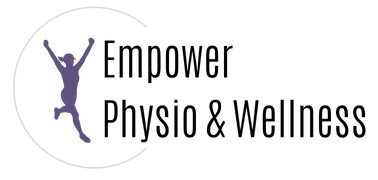Are you working out regularly but not getting the results you want? Maybe you’re trying to build muscle or get more toned. If you have a consistent strength training routine but it’s not moving you toward your goals, one thing you may be overlooking is how you recover. In today’s blog post, we’ll tackle how to build muscle after a workout. Before we unpack this, let’s cover how protein impacts your muscles.
How protein impacts your muscles
Protein is the primary building block of muscle. Without it, your muscles can’t get any bigger or stronger. If your body goes without protein for an extended period of time, it will actually break down muscle so it can use the protein in it to keep you alive.
When you lift weights, your muscles get little microtears in them, signaling to your body that they need to be repaired. Your body then comes in to repair the muscle…and then some. This over-repair is what makes your muscles bigger and stronger.
If you lift weights that are too light and don’t challenge you, only a small percentage of your muscle is working and you’re not getting those microtears. This means you won’t get the full benefit of the exercise. Instead, choose weights that are challenging!
The other critical element to gaining muscle when strength training is to consume the right amount of protein to get the full benefits from those workouts. Remember how I said that strength training actually causes small tears in the muscle? When the body comes in to repair the muscle, protein has to be present for the muscle to adequately repair and grow new muscle.
Timing for consuming protein post-workout
It is best to consume protein within 30-60 minutes after a workout because this is when the body does the most muscle repair. If you don’t have enough protein for your body to recoup your muscle after a workout, it’s like cooking lasagna in an oven that won’t heat over 150 degrees. That’s just not enough heat to actually cook your food and you’ll be severely disappointed after your 60-minute cooking timer goes off. The foundational energy isn’t there and you didn’t get the yummy lasagna you were hoping for. The same thing happens when there isn’t enough protein in your body. You’ll continue to exercise and exercise but not see the strength and toning results you’re looking for.
Gathering your baseline
So, if you want to know how to build muscle after a workout, you need to know approximately how much protein you’re consuming each day. I recommend keeping a food log for 3 days using the MyFitness Pal app, or a good old-fashioned pen and paper. Keep in mind that we’re just getting curious and gathering data–you don’t need to beat yourself up.
When tracking your protein intake, check the nutrition label if the food you’re eating has one. For things like fruits and veggies or other foods without a label, do a quick Google search. Simply write down the grams of protein you eat each day. Fill in the handy prompts I’ve included below.
3-day protein log
Track total grams of protein you consume for 3 days.
Day 1: __________ grams
Day 2: __________ grams
Day 3: __________ grams
Average protein intake:
- Day 1 protein + day 2 protein + day 3 protein = total 3-day protein intake
- Total 3-day protein intake / 3 = average protein intake per day
- Write your average protein intake per day here: _______ grams
Calculating how much protein you need
The recommended protein intake is 1-1.2 grams of protein for every kg of body weight. You can go up to 1.8 grams of protein per kg if your body needs more, if you have specific strength goals, or for individualized health needs (more on this in our next blog post where we will be talking about protein and menopause).
I know this sounds really confusing but don’t worry, we are going to go through the math and make it clear! Since we are in the US and don’t use the metric system, let’s start with a simple calculation to go from pounds to kg.
- Weight in kilograms = weight in pounds x 0.45
- Weight in kilograms = ______ kg
- Weight in kilograms x 1 = minimum amount of protein needed per day
- Write your minimum amount of protein needed per day here: _______ grams
- Weight in kilograms x 1.2 = adequate amount of protein needed per day
- Write your adequate amount of protein needed per day here: __________ grams
- Weight in kilograms x 1.8 = maximum amount of protein needed per day
- Write your maximum amount of protein needed per day here: __________ grams
Good sources of protein
- Eggs
- Grass-fed meat (chicken, beef, turkey)
- Fish and seafood
- Quinoa
- Beans
- Almonds and nut butters
- Cottage cheese
- Greek yogurt
- High-quality protein powder
Recommended protein powder
I’m a huge fan of using high-quality protein powder in your daily nutrition routine. You can mix it with water, your favorite milk alternative, or blend it with a smoothie for a well-balanced meal. The thing to remember is that not all protein powders are made the same. There are a lot of great ones out there, and a lot of crappy ones too.
My favorite is the PropelloLife protein powder. This local Columbus-based company was started by two dads who wanted to create nutritious supplements they could feed their families. They have both plant-based and whey protein. The whey is sourced from New Zealand cows. New Zealand has the highest dairy standards in the world, so this is a super clean, high-quality, and nutritious source of protein. Use discount code EMPOWER each time you check out to save some money!
Now you know how to gain muscle after a workout! It all comes down to consuming the right amount of protein. Want to build a customized plan for hitting those gains? Let’s chat.




Thank you Dr. Steph! I am adding this to my schedule.
You’re welcome! I’m glad you found the information helpful.
Thank you Stephanie. You are the best. I read the entire article and have figured out the amount of protein I need. Because of you I am doing more weight-bearing exercises. I am surprised at how much I can do compared to when I started doing this. Keep up the good work. I miss seeing you.
You are welcome! I’m glad you enjoyed this blog post and were able to figure out the amount of protein you need. I’m so glad to hear you’re exercising and doing well! I miss seeing you as well, great to hear from you.